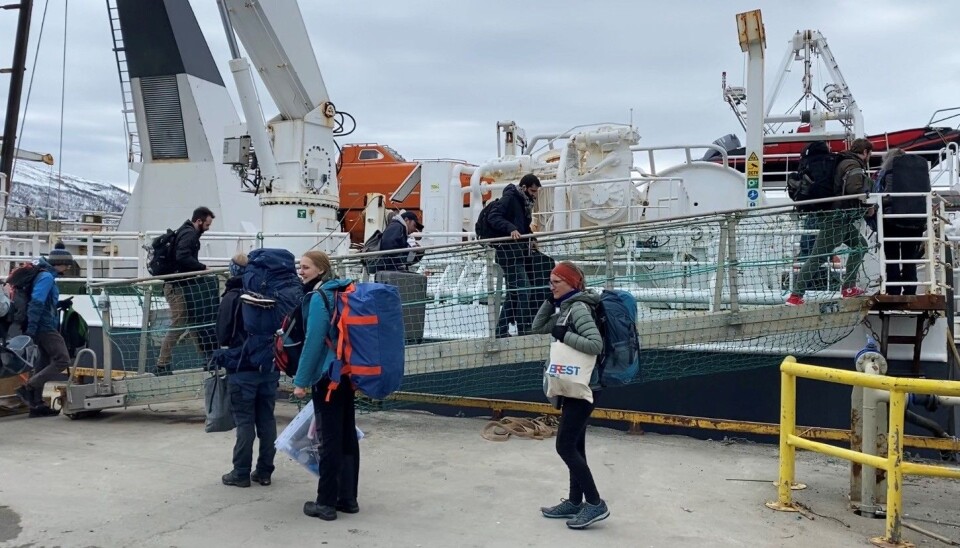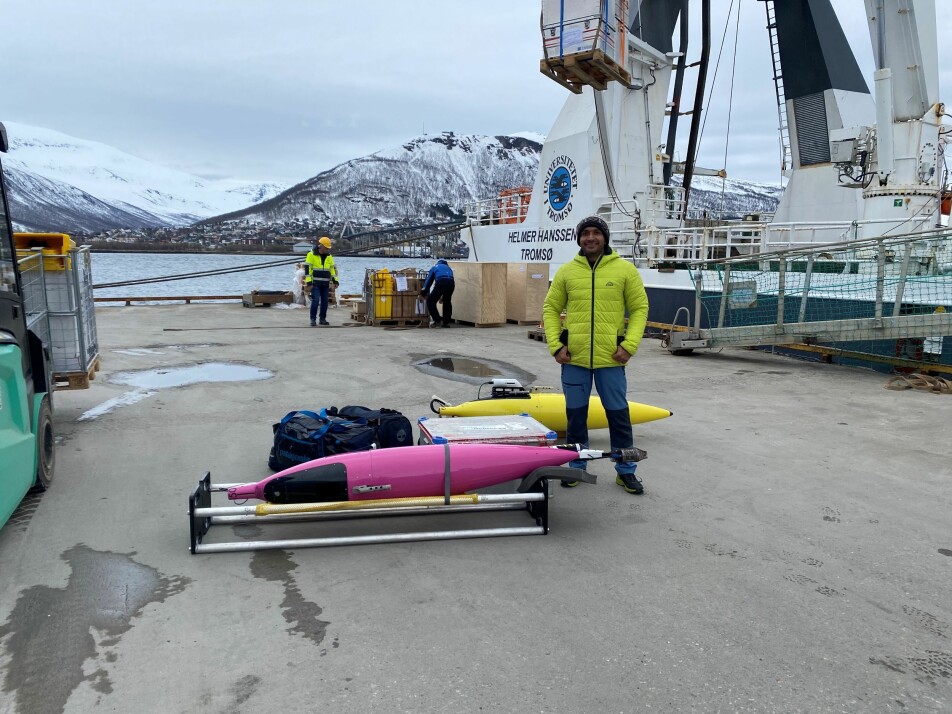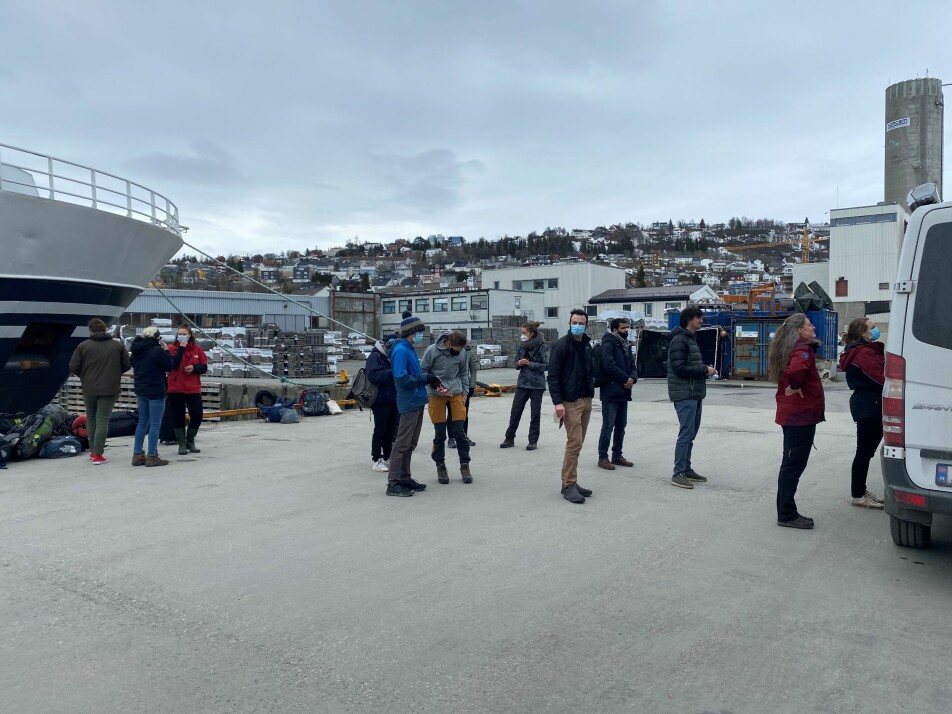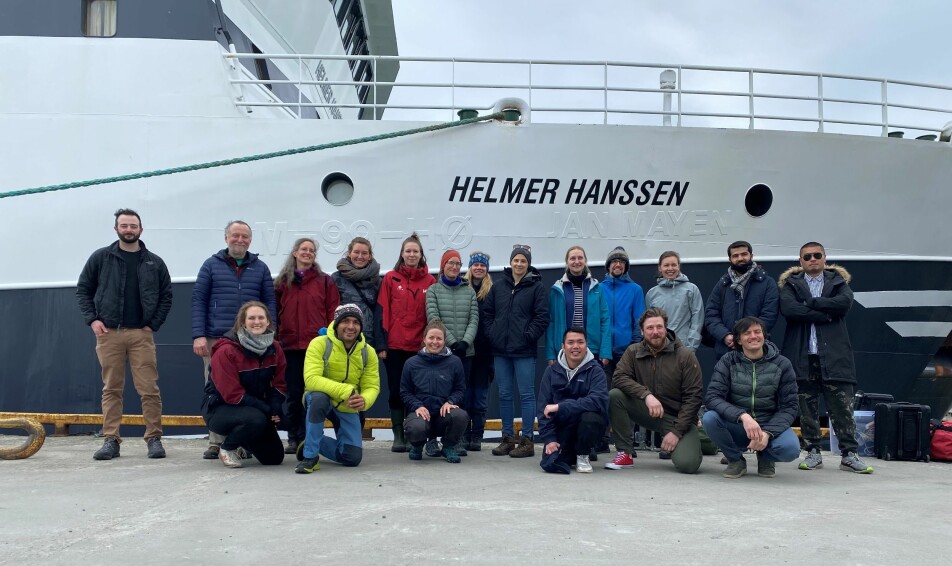
Where the Atlantic heat meets the Arctic cold
The ocean is not as endless as we often think it is. It is actually divided into different domains and regions, ranging from the freezing cold polar waters to the hot tropical regions. Within each of the domains, species have evolved to deal with the challenging conditions within their home domain.
But what if two domains meet and mix? Will there be another set of species thriving specifically there? Will there be unique food webs and biological interactions? And will these areas be important to fisheries, birds and marine mammals?

Our cruise will be targeting one of these border zones, the border zone between freezing cold Arctic waters and warmer Atlantic waters, located north of Norway and just east of Svalbard. We call this border zone the Polar Front, and it will the focus of our studies for one week, while being onboard the UiT research vessel Helmer Hanssen. For this effort the Norwegian Nansen Legacy project joined forces with the Tromsø based ARCTOS science network, providing a framework not only for research but also for education of early career scientists coming from several Norwegian institutions.

Currently we are in a ten day COVID quarantine, but then we will set sail in Tromsø on May 14 to reach our study area two days later. We will cross the Polar Front twice and take samples to explore and understand the distribution patterns and activity of plankton, fish, seafloor living creatures, marine mammals and relate these patterns to how this frontal zone is structured. Will it be just a boundary, separating Arctic from Atlantic domains and species or will it be developing its own dynamics leading to enhances food availabilities to sea birds and marine mammals like an oasis in the desert. Only sampling at sea will give us the answers.

This time of the year is among the most productive in the Barents Sea. Microscopic microalgae have waited for months for the sun light to return, and now they grow fast, providing high quality food in large quantities to zooplankton and the entire food web. We hope that we will hit the maximum of the bloom for our study, when the contrasts between domains might be biggest – but one never know, as each year is unique. Beyond research 13 students with a widely varying background will be exposed to hands-on marine science, for the many for the first time in their lives.
While our study focuses on the Polar Front, the Nansen Legacy is conducting a parallel expedition onboard the Norwegian icebreaker Kronprins Haakon, covering the entire Barents Sea from the warm Atlantic waters up into the ice covered Arctic Ocean. Through careful adjustment of our sampling efforts, we will be able to link all data sets, and together with additional information from satellites will give an excellent and powerful snapshot of the status of the Barents Sea ecosystem.

This information is critical as the Barents Sea is a sea in change, driven by multiple effects related to climate change. Only field going research like those provided through the AeN and ARCTOS partnership can solve the puzzle how the future Barents Sea will work, and if it will still sustain one of the most economically important fisheries on Earth. Over the next two weeks, we will provide you with first insights into our research approaches, preliminary findings and our personnel experiences. Stay tuned.







